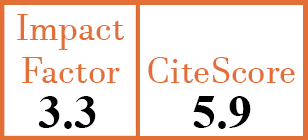Full Papers
Can nailfold capillaroscopy findings be a marker for uveitis in Behçet's syndrome?
S. Zontul1, E. Inanç2, A. Can3, Ş.T. Tay4, H. Çolak5, T. Cumurcu6, S. Yolbas7
- Division of Rheumatology, Department of Physical Medicine and Rehabilitation, Inonu University, Faculty of Medicine, Malatya, Turkey. sezginzontul@hotmail.com
- Division of Rheumatology, Department of Internal Medicine, Inonu University, Faculty of Medicine, Malatya, Turkey.
- Department of Physical Medicine and Rehabilitation, Inonu University, Faculty of Medicine, Malatya, Turkey.
- Department of Ophthalmology, Kanuni Sultan Süleyman Educational Research Hospital, Istanbul, Turkey.
- Department of Physical Medicine and Rehabilitation, Malatya Educational Research Hospital, Malatya, Turkey.
- Department of Ophthalmology, Inonu University, Faculty of Medicine, Malatya, Turkey.
- Division of Rheumatology, Department of Internal Medicine, Inonu University, Faculty of Medicine, Malatya, Turkey.
CER18454
2025 Vol.43, N°10
PI 1742, PF 1747
Full Papers
Free to view
(click on article PDF icon to read the article)
PMID: 40737102 [PubMed]
Received: 18/12/2024
Accepted : 04/04/2025
In Press: 25/07/2025
Published: 23/10/2025
Abstract
OBJECTIVES:
To evaluate the differences between BS patients with uveitis and BS patients without uveitis and healthy controls in terms of nailfold capillaroscopic examination.
METHODS:
The study was performed on patients with a definite diagnosis of BS according to the International Criteria for Behçet’s Disease, and healthy controls without BS. The participants were divided into three groups: BS patients with uveitis, BS patients without uveitis and healthy controls. All volunteers were examined by nailfold capillaroscopy for microvascular changes.
RESULTS:
A sample size of 90 participants, including 32 patients with BS with uveitis, 29 patients with BS without uveitis and 29 healthy controls, were included in our study. Fourteen (15.6%) BS patients with uveitis, 14 (15.6%) BS patients without uveitis and 16 (17.8%) healthy controls were female. In our study, we found microhaemorrhage occurrence to be significantly higher in BS patients with uveitis compared to the healthy control group (p=0.028). Although there was no significant difference compared to the BS without uveitis group, microhaemorrhage was approximately 2.5 times more common in the BS with uveitis group. The crossing medians were determined as 2.0 (0.8-3.3) in the BS with uveitis group, 1.3 (0.6-2.7) in the BS without uveitis group and 1.2 (0-3.2) in the healthy control group, showing a statistically significant difference across groups (p<0.001). In the post hoc crossing analysis, a significant difference was detected in the BS with uveitis group compared to the other two groups. A giant capillary was detected in one of the patients with uveitis, but no giant capillary was detected in the volunteers in the other groups.
CONCLUSIONS:
Our findings show that microhemorrhage and crossing are associated with uveitis in BS patients.


